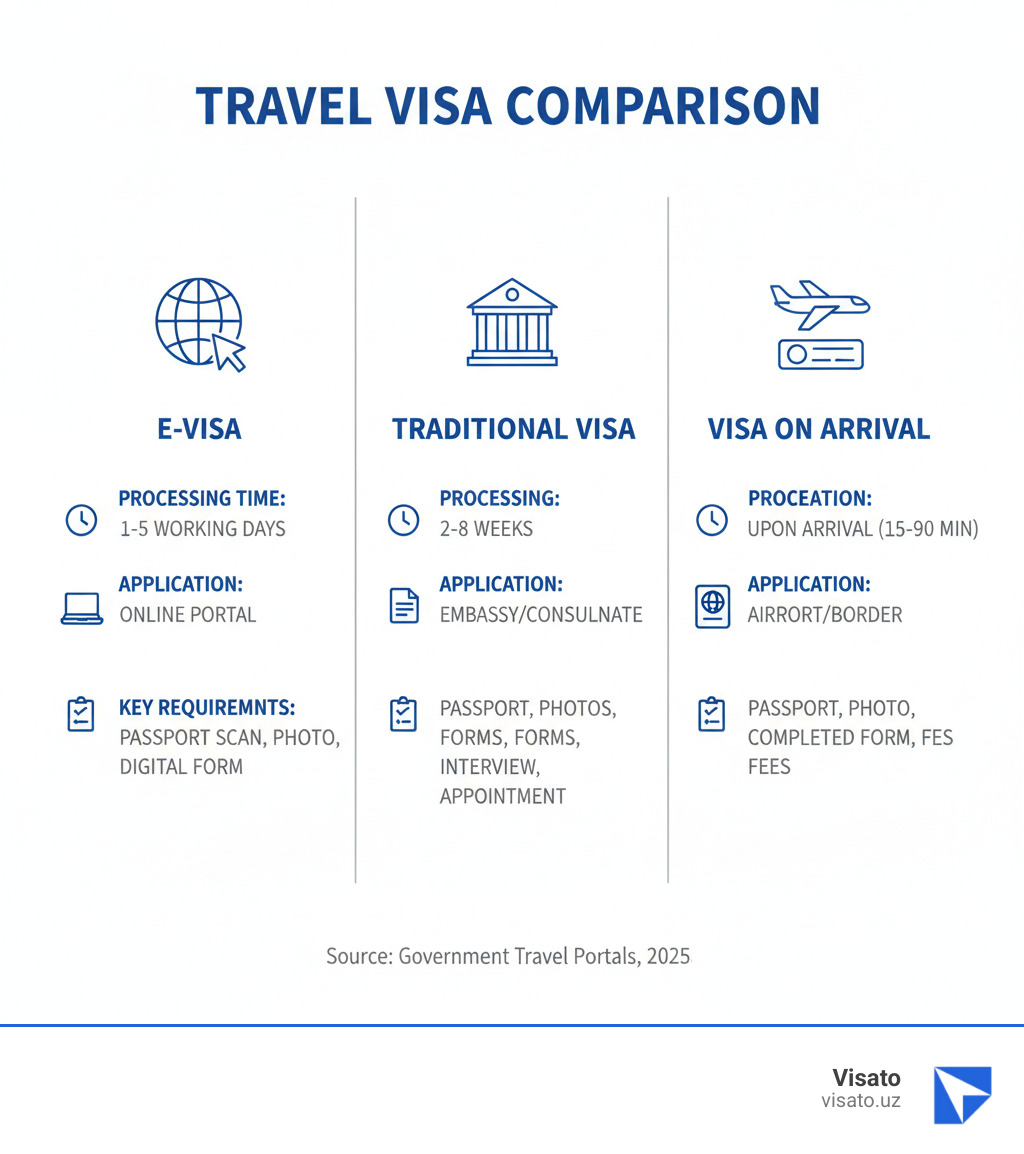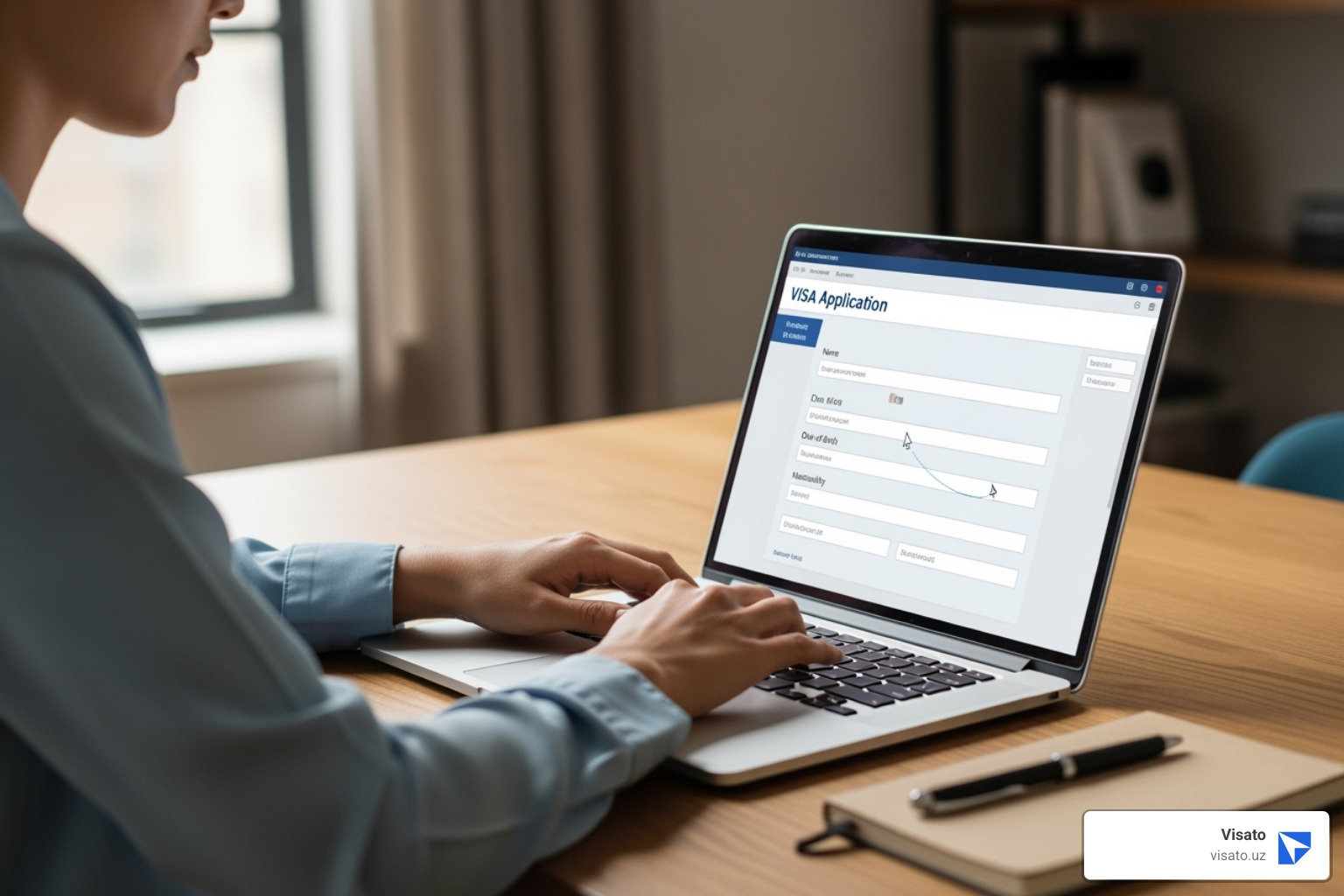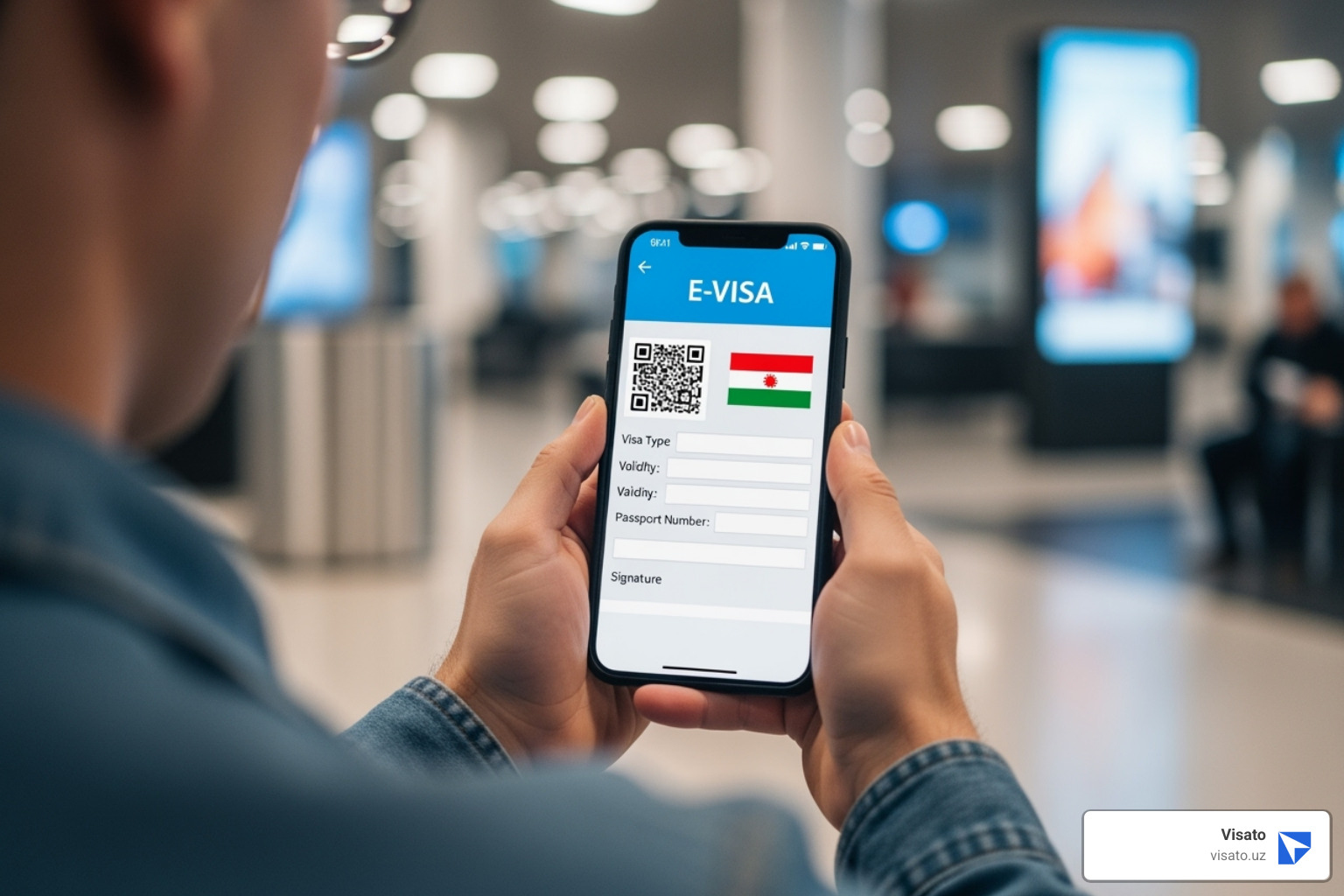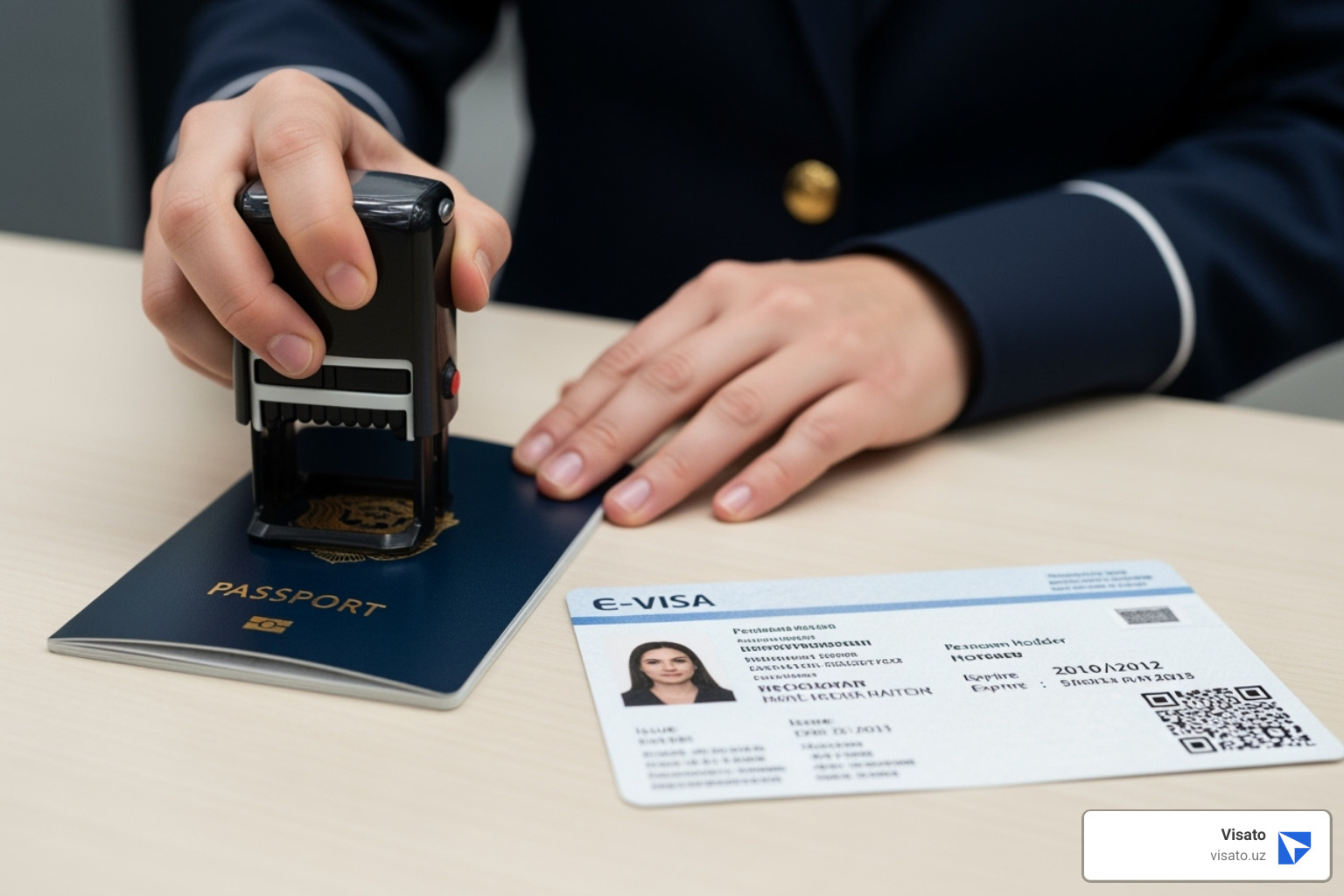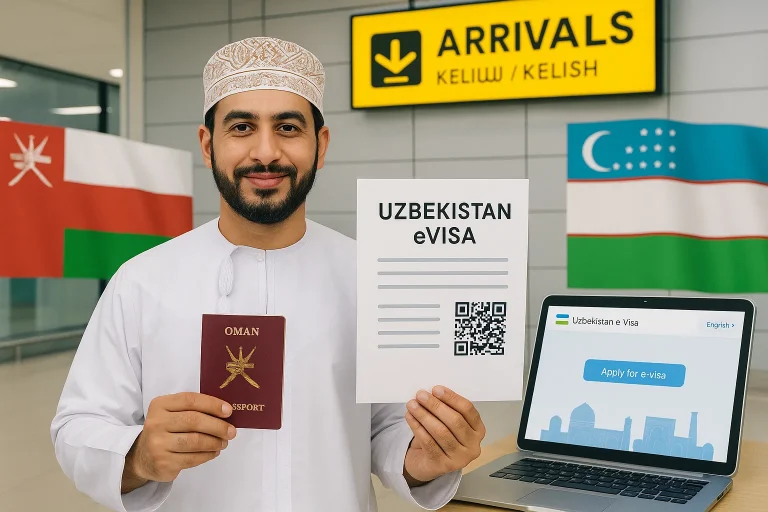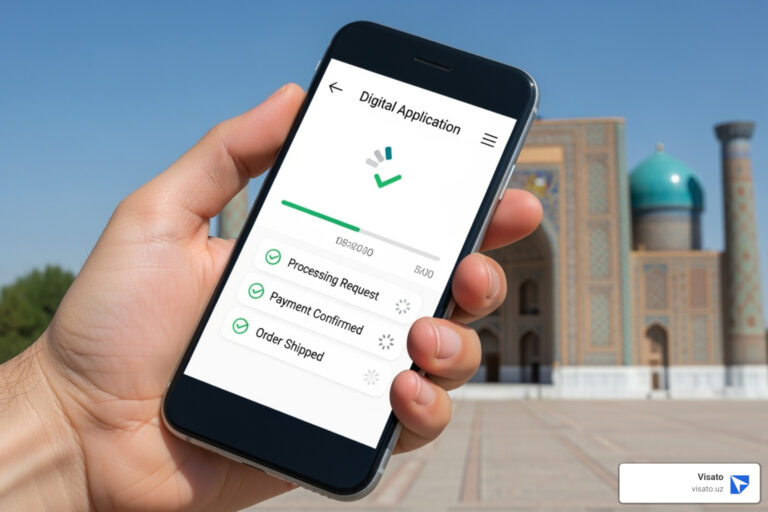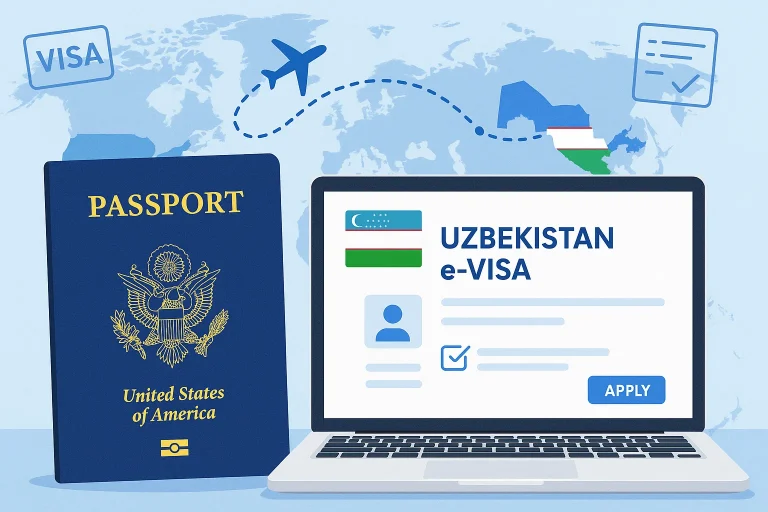Why E-Visas Are Changing the Way We Travel
How to get e-visa applications completed correctly can prevent stressful travel delays. The process is straightforward:
- Check eligibility – Verify your nationality qualifies for an e-visa to your destination.
- Gather documents – Prepare your passport (valid 6+ months), a digital photo, and any supporting documents.
- Complete the online application – Fill out the form on the official government portal.
- Pay the fee – Submit payment via a secure gateway (fees are non-refundable).
- Receive your e-visa – Get your Electronic Travel Authorization (ETA) via email, typically within 3-4 working days.
- Print and travel – Bring a printed copy with your passport to immigration.
An e-visa is a digital travel authorization that replaces traditional visa stamps in your passport. Instead of visiting an embassy, you apply online through an official government portal, and the entire process is electronic.
E-visas are available for many destinations like India, Vietnam, Turkey, and Kenya. They offer the same legal validity as traditional visas but with key advantages: no embassy appointments, faster processing, and 24/7 application convenience.
Your immigration status is stored digitally and linked to your passport number, allowing immigration officers to verify your authorization instantly upon arrival. Some countries, like the UK, are moving entirely to digital immigration records, phasing out physical documents like Biometric Residence Permits.
However, not all countries offer e-visas, and eligibility depends on your nationality. Processing times vary, and fees are non-refundable, even if your application is denied.
As Nariman Huseynov, I’ve guided thousands of travelers through the e-visa process at Visato for over 5 years. My team specializes in securing e-visa approvals for Uzbekistan and Central Asia, simplifying the process for travelers from over 60 countries.
What is an E-Visa and Who is Eligible?
An e-visa is an electronic record authorizing you to enter and stay in a foreign country for a specific period. It’s a digital authorization linked to your passport number, eliminating the need for physical stamps or stickers.
Countries worldwide are shifting to digital immigration documents. The UK, for instance, has phased out Biometric Residence Permits for fully digital records. This makes how to get e-visa authorization a simple, online process you can complete from home.
However, eligibility is not universal. It depends on your nationality and destination. Each country has its own list of eligible nationalities and specific rules. Always check the official government website of your destination to confirm you qualify before applying.
| Destination | Validity Period | Common Visa Types | Processing Time |
|---|---|---|---|
| India | 30 days, 1 year, or 5 years | Tourist, Business, Medical, Conference | 3 working days |
| Vietnam | Up to 90 days | Tourist, Business | 3 working days |
| United Kingdom | Varies (digital status) | Various categories | Up to 6 months for complex cases |
E-Visa vs. Traditional Visa: The Key Differences
- Format: Traditional visas are physical stamps or stickers in your passport. E-visas are digital records stored in an immigration database.
- Application: Traditional visas often require in-person appointments, interviews, and physical documents. E-visa applications are completed entirely online by uploading digital files.
- Embassy Visits: E-visas eliminate the need to visit an embassy or consulate, saving time and travel costs.
- Biometrics: With e-visas, biometrics (fingerprints and photos) are often captured upon arrival at the destination (e.g., India), not at an embassy beforehand.
- Processing Time: E-visas are typically processed much faster. Visas for India and Vietnam often take just 3 working days, while traditional visas can take weeks or months.
Common Types of E-Visas Available
E-visas are categorized by travel purpose:
- e-Tourist Visa: For sightseeing, leisure, or visiting friends and family. India offers 30-day, 1-year, and 5-year options, while Vietnam provides up to 90 days.
- e-Business & e-Conference Visa: For professional activities like meetings, negotiations, or attending events.
- e-Medical & e-Medical Attendant Visa: For patients seeking medical treatment and their companions. India allows up to two attendants per patient.
- Other Types: Some countries offer e-Student Visas or specialized categories like India’s e-Ayush Visa for traditional medicine treatments.
We specialize in helping travelers secure their Uzbekistan tourism e-visas, simplifying your journey to the Silk Road.
Who Can Apply for an E-Visa?
Eligibility depends on several key factors:
- Nationality: Your country of citizenship must be on the destination country’s official list of eligible nationalities.
- Purpose of Travel: Your reason for visiting must align with an available e-visa category (e.g., tourism, business). An e-tourist visa cannot be used for long-term work.
- Passport Type: E-visas are typically for ordinary passport holders. Holders of diplomatic or official passports are often ineligible. Each traveler, including infants, must have their own individual passport.
Always verify your eligibility on the official government website before applying. This simple step can save you from a rejected application and lost fees.
Your Step-by-Step Guide on How to Get an E-Visa
Let’s walk through how to get e-visa approval. The process happens online through official government portals. Always use these official sites to avoid fraudulent ones that may steal your information or charge inflated fees. With your documents ready, the application typically takes 10-15 minutes.
Step 1: Check Requirements and Gather Your Documents
Before starting, gather all necessary items to avoid interruptions.
- Passport Validity: Most countries, including India and Vietnam, require your passport to be valid for at least six months from your arrival date. Renew it first if it’s close to expiring.
- Blank Passport Pages: Many countries, like India, require at least two blank pages for entry stamps.
- Digital Photograph: You’ll need a recent, front-facing photo with a plain white background. Avoid shadows, glare, and glasses. Pay attention to file size requirements (e.g., under 50KB for Vietnam).
- Passport Scan: A clear, legible scan of your passport’s data page is required. Vietnam requires this file to be under 200KB.
- Supporting Documents: Depending on your travel purpose, you may need an invitation letter (business), a letter from a hospital (medical), proof of hotel bookings, or return flights (tourist).
If documents are not in English, have them translated. For specific Uzbekistan requirements, see our guide: Learn about specific requirements.
Step 2: Complete the Online Application Form
Steer to the official e-visa portal for your destination and fill out the application with care. Accuracy is critical.
- Personal Details: Enter your name, date of birth, and nationality exactly as they appear on your passport. Even a small typo can cause a rejection.
- Passport Information: Double-check your passport number, issue date, and expiry date for accuracy.
- Travel Itinerary: Be ready to provide your planned arrival date, port of entry, and accommodation details.
- Document Upload: Upload the digital files you prepared in Step 1, ensuring they meet the specified size and format requirements.
Most portals, like the UK eVisa system, allow you to save your application progress and return later. For travel to India, use the official government portal: Find the official Indian e-visa portal.
Step 3: Pay the E-Visa Fee
After completing the form, you’ll be directed to a secure payment gateway to pay with a credit or debit card.
Crucially, e-visa fees are non-refundable. This policy is standard for most countries, including India and Vietnam. The fee covers processing costs, not a guarantee of approval, so double-check all information before paying.
Some countries add a small bank transaction charge (e.g., India adds ~2.5%). After payment, your payment status may take up to two hours to update due to network delays. Be patient and avoid submitting a second application.
Once payment is confirmed, your application is submitted. The next step is waiting for processing.
After You Apply: Processing, Status Checks, and Troubleshooting
After submitting your application, you’ll receive a confirmation email with an application reference code. Keep this code safe, as you’ll need it to track your application. Once approved, your e-visa is issued as an Electronic Travel Authorization (ETA).
Your application is now in a queue for review by immigration officials who will verify your information and documents.
How long does it take to get an e-visa?
Processing times vary by country, visa type, and travel season. Peak periods can cause delays.
- Average Time: Many countries, like Vietnam and Myanmar, process e-visas within 3 working days.
- India: It’s recommended to apply at least 4 days in advance for most e-visas. You can apply up to 120 days before your travel date.
- Complex Cases: Some applications take much longer. A UK eVisa for ‘No Time Limit’ (NTL) status can take up to 6 months due to extensive checks.
Always apply well in advance of your departure date. For a comprehensive overview of the Uzbekistan process, Read our complete e-visa guide.
How to check the status of your e-visa application
Most e-visa systems offer straightforward tracking.
- Online Portal: Use the online status check portal on the official e-visa website where you applied. You will need your application reference code and other personal details, like your date of birth.
- Email Notifications: You will receive email updates at key stages, including receipt and approval. Always check your spam or junk folder for these notifications.
If you applied for an Uzbekistan e-visa through Visato, you can use our portal: Check your application status.
What to Do if Your Application is Rejected or Needs Changes
If your application has an issue, it’s often correctable.
- Request to Re-upload Documents: A common issue is a blurry photo or passport scan. You’ll typically receive an email within 24 hours with instructions to upload a clearer version through the portal. Respond promptly.
- Common Rejection Reasons: Applications are often rejected for incorrect information (e.g., name misspelling), ineligibility (wrong nationality or travel purpose), security flags, or incomplete forms.
- Re-application: Since e-visa fees are non-refundable, a rejection requires a new application and payment. This underscores the importance of double-checking every detail before submitting.
If you need help, contact support. India provides a 24/7 helpline (indian-evisa@gov.in), and for UK eVisa issues, you can Get help with your UKVI account via online chat. Staying calm and responding to requests promptly is key to resolving issues.
Using Your E-Visa: Validity, Rules, and Travel Guidelines
Knowing how to get e-visa approval is the first step; knowing how to use it is just as important. Here are the key rules for validity, travel, and restrictions.
Understanding E-Visa Validity and Extensions
E-visas come with specific rules on your length of stay and number of entries.
- Entry Types: E-visas can be for a single entry (visa is void after you leave) or multiple entries (allowing you to enter and exit multiple times). Vietnam offers both options.
- Validity Period: This varies greatly by country. India’s e-Tourist visas can be valid for 30 days, 1 year, or 5 years, while Vietnam’s is valid for up to 90 days.
- Non-Extendable/Non-Convertible: A crucial rule for most e-visas (including India’s) is that they are non-extendable and non-convertible. You cannot extend your stay or change your visa type (e.g., from tourist to business) while in the country.
Plan your trip within the visa’s duration. For more time, you must leave and reapply. For Uzbekistan-specific conditions, see our guide: More on what you need to know.
How to travel with an e-visa
Follow these practical steps for a smooth airport experience:
- Print Your Approval: Most countries, including India and Vietnam, require a printed copy of your Electronic Travel Authorization (ETA). Keep it with your passport.
- Have a Digital Backup: Save a copy on your phone or in your email as a backup.
- Present Documents at Immigration: Show both your passport and the printed e-visa to the immigration officer. In some countries like India, your biometric details (fingerprints, photo) will be captured on arrival.
- Traveling with a New Passport: If your e-visa was issued for an old passport, you must carry both passports (the old one with the visa and your new one) for entry.
Restrictions and Limitations
Be aware of your e-visa’s limitations:
- Restricted Areas: Your e-visa may not grant access to all parts of a country. For example, Indian e-visas do not cover Protected/Restricted and Cantonment Areas, which require separate permits from the Civil Authority.
- Ports of Entry: Your e-visa may only be valid for entry through designated airports or land borders. Check the list of approved entry points.
- Embassy Role: Embassies and consulates generally do not handle e-visa inquiries. For help, you must contact the official e-visa portal’s support channels.
Understanding these rules beforehand prevents issues at immigration.
Frequently Asked Questions about E-Visas
Here are answers to common questions about how to get e-visa approval.
Can I get an e-visa for any country?
No, e-visa systems are not universal. Not all countries offer them, and eligibility varies widely by nationality. Always check the official immigration website of your destination country to confirm if your nationality qualifies. While the number of countries with e-visa programs is growing, you should never assume availability.
What is the most common mistake on an e-visa application?
The most frequent errors are incorrect personal details and poor-quality document uploads.
- Information Mismatches: Any detail, such as your name or passport number, that does not match your passport exactly can lead to rejection.
- Photo/Document Issues: Blurry images, photos with incorrect backgrounds (it must be plain white), or files that don’t meet size requirements are common reasons for denial.
Double-check all information before submitting, as fees are non-refundable.
Do I need to visit an embassy to get an e-visa?
No. A major advantage of e-visas is that the entire process is completed online. You apply, upload documents, pay, and receive your Electronic Travel Authorization (ETA) via email without ever visiting an embassy or consulate. This convenience is what makes e-visas a modern and accessible alternative to traditional visa applications.
Your Smooth Journey Starts Here
This guide has shown that how to get e-visa approval is a straightforward process: check eligibility, prepare documents, apply online, and receive your approval by email. The convenience, speed, and ability to skip embassy visits are game-changers for travelers.
Before you travel, complete this final checklist:
- Is your e-visa approved and printed?
- Does your passport have at least six months of validity?
- Do you have all supporting documents ready (e.g., hotel bookings, return tickets)?
For travelers planning to explore Uzbekistan, Visato.uz can make your journey even smoother. We specialize in the Uzbekistan e-visa process, understanding the common pitfalls and ensuring your application is approved quickly, typically within 2-3 business days. Our service is fast, simple, and secure, with 24/7 support available.
Let us handle the complexities while you plan your adventure.
Ready to start your Uzbekistan journey? Apply for your Uzbekistan E-Visa today!
Safe travels!

